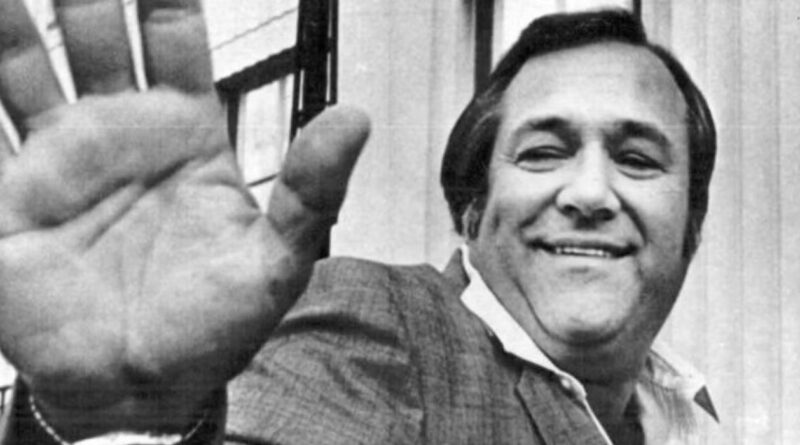Barry Seal Assassination in Baton Rogue Louisiana
The assassination of Adler Berriman “Barry” Seal on February 19, 1986, in Baton Rouge, Louisiana, is one of the most chilling examples of the violent lengths to which drug cartels will go to protect their operations. Seal, a former airline pilot turned drug smuggler, lived a life of high-stakes crime before becoming an informant for the U.S. government. His brutal murder at the hands of Colombian cartel hitmen not only exposed the reach of the Medellín Cartel but also revealed the murky intersections between international drug trafficking, law enforcement, and covert government operations. This article explores Barry Seal’s life, his involvement with the DEA, and the circumstances that led to his untimely death.
Barry Seal: From Pilot to Smuggler
Barry Seal was born on July 16, 1939, in Baton Rouge, Louisiana. From a young age, he exhibited exceptional talent as a pilot. By the time he was 16, he had earned his student pilot certificate, and at 17, he obtained his private pilot’s license. Seal’s skills and ambition quickly led him to a promising career with Trans World Airlines (TWA), where he became one of the youngest captains flying Boeing 707s.
However, Seal’s promising career with TWA came to an abrupt end in 1972 when he was arrested for attempting to smuggle plastic explosives to Mexico. Although the charges were later dropped, Seal’s career with TWA was over, and he turned to a more lucrative—albeit illegal—path: drug smuggling.
Seal’s Rise as a Drug Smuggler
Seal’s expertise as a pilot made him an invaluable asset to drug cartels. By the late 1970s, he was working with major criminal organizations, including the infamous Medellín Cartel. Seal’s operations involved transporting vast quantities of cocaine and marijuana into the United States, earning him millions of dollars. His reputation grew as a skilled and reliable smuggler, capable of evading law enforcement and delivering high-value shipments.
One of Seal’s key advantages was his use of modified aircraft, which allowed him to carry larger loads and navigate undetected. At the height of his smuggling career, Seal was reportedly flying multiple missions a week, earning up to $1 million per flight. However, his high-profile activities eventually drew the attention of U.S. authorities.
Cooperation with the DEA
In 1983, Seal’s luck ran out when he was arrested in Florida on drug trafficking charges. Facing a lengthy prison sentence, he made a deal with the Drug Enforcement Administration (DEA), agreeing to become an informant in exchange for leniency. Seal’s cooperation proved invaluable, as he provided detailed information about the Medellín Cartel’s operations and helped U.S. authorities gather evidence against high-ranking cartel members.
One of Seal’s most significant contributions as an informant was his role in a sting operation that exposed the Nicaraguan Sandinista government’s involvement in drug trafficking. Using a C-123 cargo plane equipped with hidden cameras, Seal captured photographs of Nicaraguan officials loading cocaine onto his aircraft. These photos were later used by the Reagan administration to justify its support for Contra rebels fighting the Sandinista government. While this operation brought Seal fame within law enforcement circles, it also made him a target for the cartel.
The Assassination of Barry Seal
Despite his cooperation with U.S. authorities, Seal’s past associations made him a marked man. On February 19, 1986, Seal was serving a court-ordered sentence at a Salvation Army halfway house in Baton Rouge. That evening, as he parked his Cadillac outside the facility, two Colombian hitmen ambushed him and fired multiple rounds from a MAC-10 submachine gun. Seal was killed instantly.
The assassination bore the hallmarks of a cartel hit. Investigators later discovered that the Medellín Cartel had placed a bounty on Seal’s life, reportedly worth $500,000, after learning of his role in exposing their operations. Seal’s cooperation with the DEA, coupled with his involvement in the Sandinista sting, had sealed his fate.
Legal Fallout and Arrests
The investigation into Seal’s murder led to the arrest of six Colombian nationals. Three of them—Luis Carlos Quintero-Cruz, Miguel Vélez, and Bernardo Antonio Vásquez—were convicted of first-degree murder and sentenced to life imprisonment without the possibility of parole. Evidence presented during their trial confirmed their ties to the Medellín Cartel, solidifying the belief that Seal’s assassination was a direct order from cartel leaders, including Pablo Escobar.
The case highlighted the dangers faced by informants in the drug trade and underscored the reach of the Medellín Cartel, which had no qualms about assassinating individuals on foreign soil to protect its interests.
Theories and Controversies
Seal’s death has given rise to numerous theories and controversies, many of which revolve around his connections to both the U.S. government and the Medellín Cartel. Some speculate that Seal’s assassination was not solely orchestrated by the cartel but may have been facilitated or allowed by individuals within the U.S. government who sought to silence him.
One controversial theory suggests that Seal had knowledge of covert operations involving the CIA and drug trafficking during the Iran-Contra affair. Proponents of this theory argue that Seal’s cooperation with law enforcement and his potential testimony posed a threat to powerful entities, making his death convenient for multiple parties.
Barry Seal’s Legacy
The life and death of Barry Seal have had a lasting impact on public perception of the drug trade and government complicity in international crime. Seal’s exploits have been dramatized in books, documentaries, and films, including the 2017 movie American Made, in which Tom Cruise portrayed him. While the film took creative liberties with Seal’s story, it reignited interest in his life and the circumstances of his assassination.
Seal’s murder also underscored the violent realities of the drug trade, where betrayal often leads to swift and brutal retribution. His story serves as a stark reminder of the risks faced by those who navigate the murky waters of crime and law enforcement.
Conclusion
Barry Seal’s assassination remains one of the most infamous events in the history of the U.S. war on drugs. His transformation from commercial airline pilot to drug smuggler, and ultimately to DEA informant, illustrates the complexities of a world where crime and government interests often intersect. While the Medellín Cartel is widely believed to have ordered his murder, unanswered questions about Seal’s government connections and potential secrets continue to fuel speculation.
As one of the most enigmatic figures in the drug trade, Seal’s story is a cautionary tale of ambition, betrayal, and the high price of operating in the shadows. Decades later, his death remains a symbol of the violent and unpredictable nature of the international narcotics industry.
Discover more from City Towner
Subscribe to get the latest posts sent to your email.




